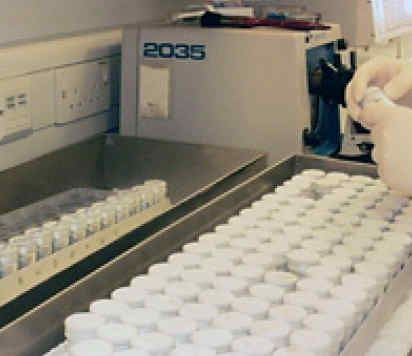Database Access:
Please access the ICHTB using the link provided on the left banner.
The Database has access restrictions in place to ensure the security of details stored:
You can access the Database from an ICL wired network computer (i.e. plugged into the network, this will not work via ICL Wi-Fi only) or via a ICL VPN access.
To set up the VPN on your device, please follow the instructions from this page: Virtual private network (VPN) | Administration and support services | Imperial College London. There is an option to remember the VPN on your machine for easy future access.
Login details: Once set up as a user on the Database, please use your ICL login details, we do not hold your login details.
If you are not yet set up as a user, please click on “Apply for an account”, you will be contacted by the Tissue Bank team to confirm your requirements.
Once logged into the system, please download the User Guide which can be found at the top of the left hand side menu.
ICHTB Main collection
We record extensive information about donors who consent to give samples to our main ICHTB collection. Information about the donor and samples is recorded in an online database that is accessible to Imperial staff who have a legitimate research interest in human tissue collections. When samples are harvested from surgery (or any other procedure) by our staff, a record is created containing pseudo-anonymised information about the donor, the samples taken, the type of consent obtained and the surgical procedure used to harvest the samples. Histology information is added to this record at a later date if this is possible. Information about any extracts taken from samples is also added to the sample record as required.
In the main ICHTB sample collection (and at the time of writing), we hold over 60,000 unallocated samples from many different organs and many different diseases. This sample collection may be searched via an interface in the online database and samples can be requested through applying for a Research Project.
Other Sub-collections
Other sample collections are grouped in sub-collections which are also represented in the database. A sub-collection record contains information about the Principal Investigator involved, the type of samples collected, the consent gained and the samples collected. Principal Investigators and other designated members of staff can use the online database system to record information about donors and samples in their sub-collections. Registration of a sub-collection permits only collection and storage of tissue.
Accessing samples for research
Hosting samples in a sub-collection on its own does not provide ethical approval to use them in research studies. A further process of approval is required before samples can be released to researchers. Further information on accessing samples for use in research can be found in Using Human Samples in Research. Information about samples and extracts used in research is kept in a project record. The project record contains information about the aims of the research, the research PI and the samples and extracts used. The database provides a facility to track issue of samples from sub-collections to specific projects.
Data and regulatory compliance
The database is compliant with the GDPR legislation. Information on Imperial College's Privacy policy can be found on the College's Data Protection website and the Faculty of Medicine's page.
In some cases, experimental results are uploaded to the database and linked with the sample that generated them. This greatly enhances the value of the remaining samples for the donor. If you would like to discuss how this could be achieved with results from your experiment, please contact Chris Tomlinson.
These processes ensure compliance with both the Tissue Bank's ethics approval and HTA regulations. All tissue collections are subject to a rolling audit to ensure that information held by the ICHTB is accurate and that records of consent, samples stored and sample usage are properly monitored by the PI of the sub-collection.
Please see the ICHTB Database User Guide (PDF) for more information.
